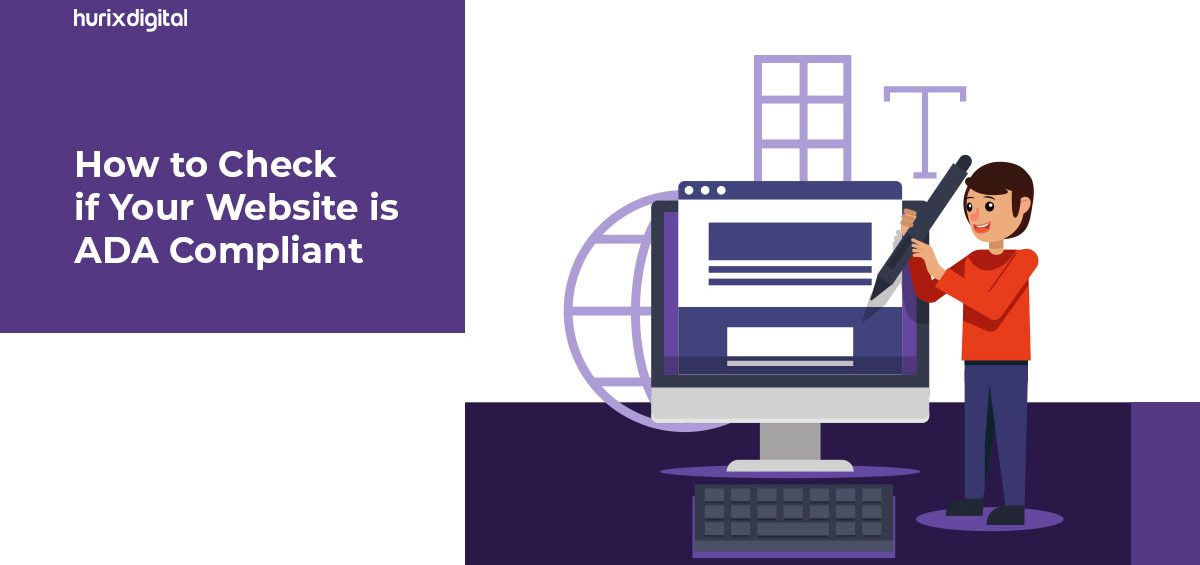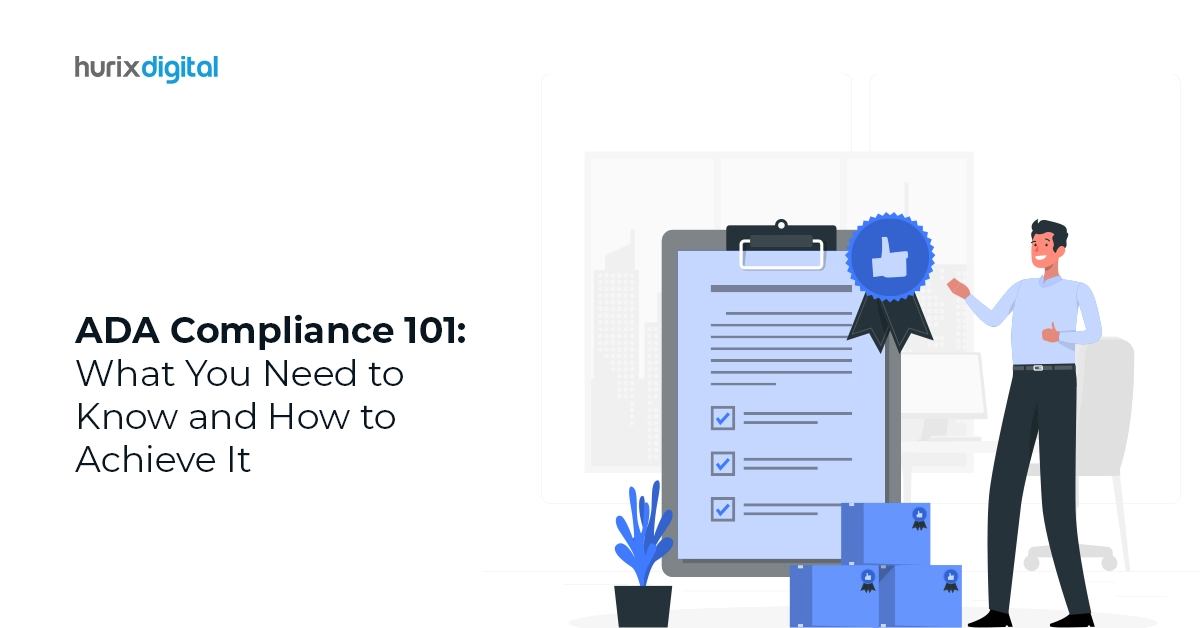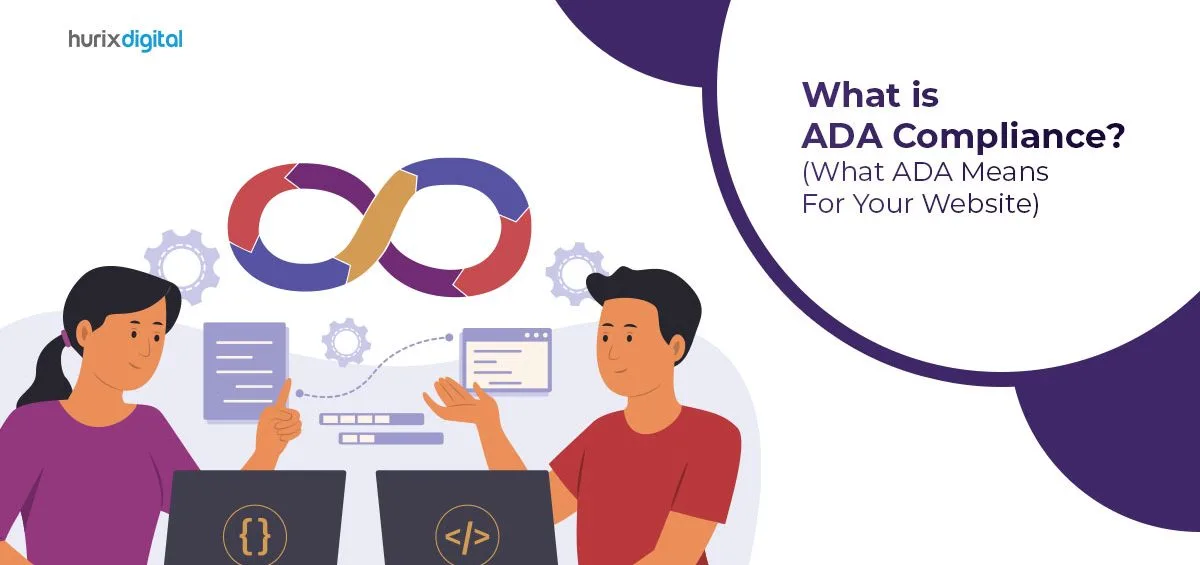Summary
The blog post offers a comprehensive guide on checking the ADA compliance of a website. It outlines key accessibility standards and guidelines, provides tips for conducting manual inspections, and suggests automated tools for evaluating accessibility. The post empowers website owners and developers with the knowledge and resources to ensure their websites meet ADA requirements and provide an inclusive online experience for all users.
Table of Contents:
- Introduction
- How to Check ADA Compliance?
- What are the Best Practices for ADA Compliance?
- Why is ADA Compliance Important?
- Summing Up
Introduction
ADA compliance on websites has become a major accessibility concern for businesses. ADA compliance means meeting the standards set by the Americans with Disabilities Act (ADA), known as the Standards for Accessible Design.
The Act lays down standards for accessibility in electronic and information technology, particularly website accessibility.
The website accessibility rules in the ADA apply to almost all businesses and web developers. You can check ADA compliance using an ADA-compliant website checker.
To comply with the Act, the information on your website has to be easy to access for people with disabilities. For instance, visually impaired people should be able to read your content using a text reader, browse through categories, and shop for products. You can ensure this through ADA compliance testing.
Read on to learn more.
How to Check ADA Compliance?
There are different ways to check whether your site is ADA-compliant, which are listed below.
Also Read: The Importance of ADA Compliance for Website Owners
Online Tools
There are online ADA compliance checkers such as WAVE and Lighthouse. These tools check certain features on your site, such as the color contrast, the size of the text, image alt text, and more. These online checkers can be used to assess one page at a time.
There are several web accessibility solutions that you can consider using to check your site for ADA compliance. Some tools focus on specific compliance aspects, such as color contrast.
Online tools like WAVE assess and grade your website according to a list of criteria that are based on ADA compliance requirements. There are also online tools that help you check how your website performs through a web accessibility report or evaluation.
There are free and paid options available.
For instance, you can enter a URL, and the tool will generate an accessibility report. This can help you check whether your site is accessible and what changes you need to incorporate for ADA web compliance.
Manual Assessment
You can also check if your website is ADA-compliant manually. A manual assessment involves checking each page of your website for accessibility.
You can do this using the Web Content Accessibility Guidelines (WCAG), which contain a checklist for ADA compliance.
There are four main principles for ADA compliance. These are given below. A WCAG compliance checker will check your website to ensure it meets the guidelines.
1. Perceivable
All the information and user interface features should be visible or perceivable. This includes text, images, and video.
If it is not possible to view it directly, an alternative option should be provided, like a transcript for a video.
2. Operable
Users should be able to use the interface easily. Any interactions or operations that cannot be performed should be removed.
People who visit your website should be able to navigate it and use its features.
3. Understandable
The information and user interface should be easy to understand. The website and its content should be accessible.
For instance, this can be done by adding instructions for how to use a feature on the website.
4. Robust
The content should be robust, which means that different kinds of users should be able to use it. The website should provide different site visitors with the same experience.
For example, a video transcript should cover all the content of the video.
Professional Assessment
In most cases, manual accessibility testing is not feasible for a business. Given the consequences of not complying with ADA standards, it is worth considering a professional audit to ensure your website is ADA-compliant.
You can hire a professional web design agency to build an ADA-compliant website for you or an accessibility agency to audit your website for ADA compliance.
What are the Best Practices for ADA Compliance?
Here are some best practices to ensure that your website is ADA-compliant.
1. Accessible Content
Some ways to ensure that your content is accessible are given below:
- Keep sentences short so they are easy to read
- Use bullet points instead of long paragraphs
- Use bold for important phrases
- Use headings with a proper heading structure
2. Add Alt Text to Your Media Content
Adding alt text to images, audio, video, and controls ensures that viewers can read a description of the content even if they cannot hear it or see it properly.
3. Use Color Contrast
An ADA-compliant website checker will check color contrast. Color contrast is an important part of user-friendly design and makes your website more visually accessible.
4. Provide Transcripts and Captions
Transcripts and captions for audio and video content ensure that people with hearing impairments can still read the content.
5. Use Descriptive Links and HTML Labels
Descriptive links tell a viewer where a link will lead them to. HTML labels indicate what the function of a button is.
For example, an “x” sign indicates clicking on it will close the pop-up.
Also Read: How to Make Your Website ADA/WCAG Compliant
Why is ADA Compliance Important?
ADA compliance is critical, not just because it is legally required. It also has several benefits for your business website and your customers.
It Promotes Equal Access
If your website is ADA-compliant, it makes it more inclusive for people with disabilities and a broader range of people in general.
This also improves your brand image and reach.
It Avoids Legal Penalties
A report found that 2,352 web accessibility lawsuits were filed against U.S. businesses in 2021, which was a 14.3% increase from 2020. Ensuring ADA compliance helps avoid legal penalties and costly lawsuits.
In addition to legal fees, you may incur costs in settlements and rebuilding your website.
It Improves the User Experience
By making your website more accessible, you ensure a better user experience. A study found that 71% of website visitors who have disabilities will leave a website if it is not accessible.
The more accessible your website is, the more users you can reach.
Summing Up
ADA compliance helps your website stay legally compliant as well as user-friendly. Using an ADA-compliant website checker is one of the simplest ways to check ADA compliance.
Hurix offers design solutions to help make your website more accessible and ensure ADA compliance. Contact us today to learn more.











